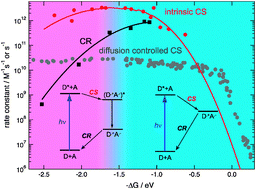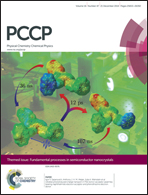Bimolecular photoinduced electron transfer reactions in liquids under the gaze of ultrafast spectroscopy
Abstract
Because of their key role in many areas of science and technology, bimolecular photoinduced electron transfer reactions have been intensively studied over the past five decades. Despite this, several important questions, such as the absence of the Marcus inverted region or the structure of the primary reaction product, have only recently been solved while others still remain unanswered. Ultrafast spectroscopy has proven to be extremely powerful to monitor the entire electron transfer process and to access, with the help of state-of-the-art theoretical models of diffusion-assisted reactions, crucial information like e.g. the intrinsic charge separation dynamics beyond the diffusion limit. Additionally, extension of these experimental techniques to other spectral regions than the UV-visible, such as the infrared, has given a totally new insight into the nature, the structure and the dynamics of the key reaction intermediates, like exciplexes and ions pairs. In this perspective, we highlight these recent progresses and discuss several aspects that still need to be addressed before a thorough understanding of these processes can be attained.


 Please wait while we load your content...
Please wait while we load your content...